Are you looking to improve your search engine optimization strategy? If so, you’ll want to check out the Google Keyword Planner tool. This powerful tool is designed to help you research and select the best keywords for your website, so you can get more traffic and higher rankings in search engine results.
In this article, we will provide you with a step-by-step guide on how to use the Google Keyword Planner tool to its maximum potential. Learn how to discover new keywords, filter and refine your results, track your progress, and so much more. Whether you’re a small business owner or a digital marketer, this tool is a must-have in your arsenal of SEO tools. So let’s get started and see how the Google Keyword Planner can help you boost your website’s visibility and performance.
#1 Step-by-Step Guide to Using the Google Keyword Planner Tool
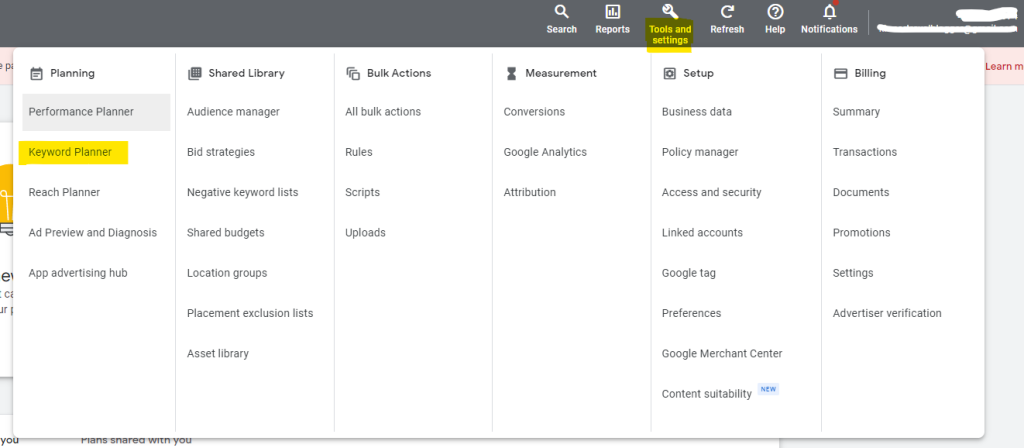
Image Source: Google
But how exactly do you use the Google Keyword Planner tool? It’s quite simple, and in this article, we’ll walk you through the process step by step.
First, you’ll need to have a Google Ads account. If you don’t have one already, you can easily create one for free. To access the Keyword Planner, log in to your Google Ads account and click on the “Tools and Settings” tab at the top of the page. From the drop-down menu, select “Keyword Planner”.
#2 Discovering New Keywords
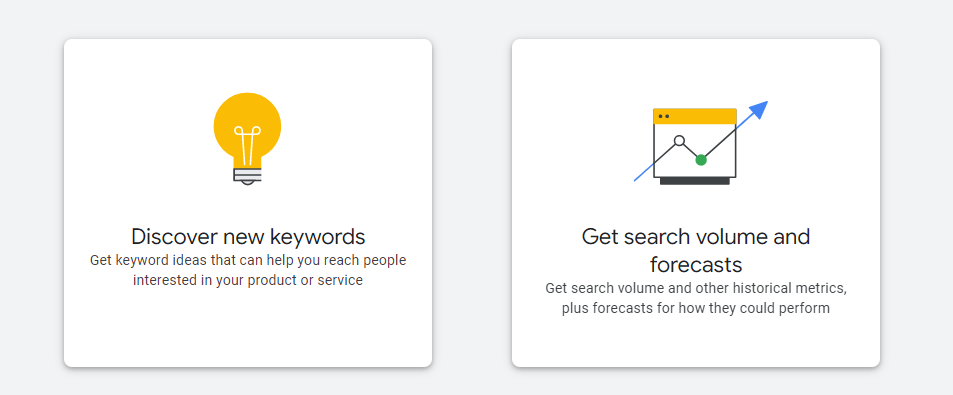
Image Source: Google
Next, you’ll see two options: “Discover new keywords” and “Get search volume and forecasts.” The first option allows you to enter a website or product to find related keywords, while the second option allows you to enter specific keywords to see their search volume and potential ad performance.
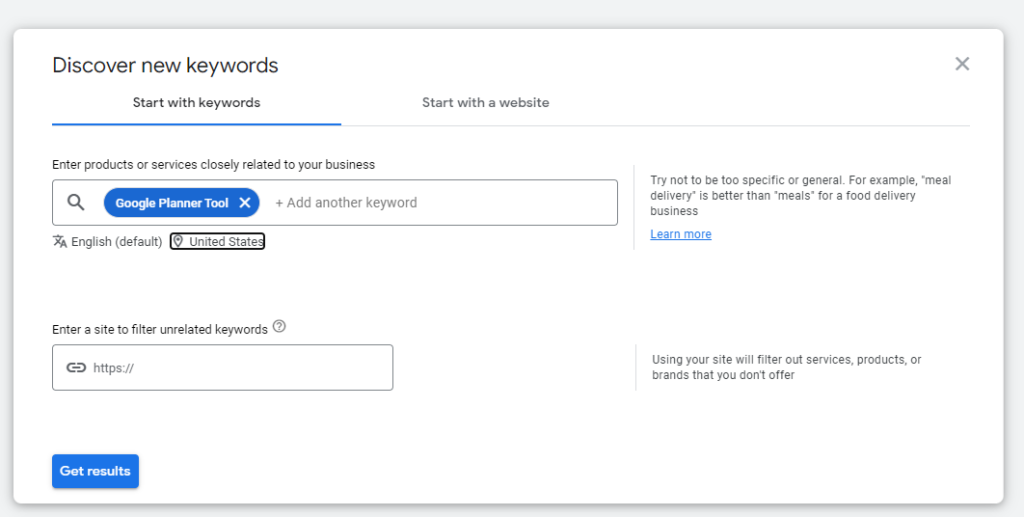
Image Source: Google
To get started with the Google Keyword Planner tool, we recommend trying the “Discover new keywords” option. This feature allows you to enter your website or product and receive a list of related keywords and phrases. From there, you can use various filters to refine the results and find the keywords that are most relevant to your business. For example, the “Search volume” filter allows you to see the number of monthly searches for each keyword, which can help you prioritize your keyword-targeting efforts.
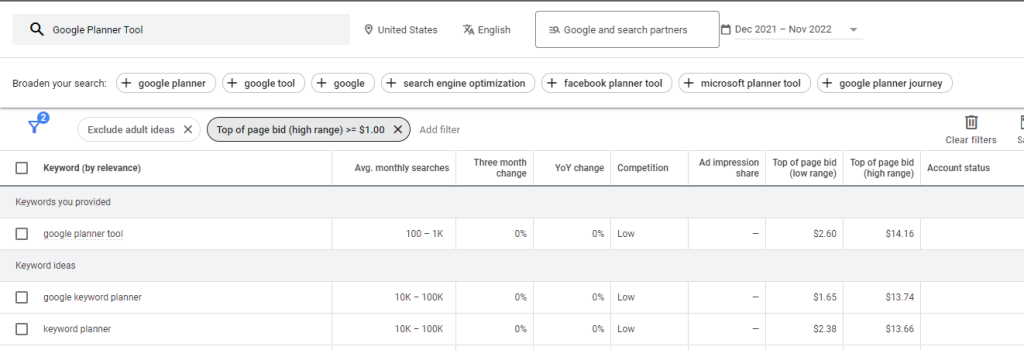
Image Source: Google
The “Competition” filter is also useful, as it allows you to narrow down your keywords by their competition level (low, medium, or high). This can be helpful when you want to focus on keywords that are less competitive or have a higher potential for success. Additionally, you can use the “Top of page bid” filter to see the average cost-per-click (CPC) for each keyword, which can help you determine the potential ROI of targeting a particular keyword in your paid advertising campaigns. Keywords with a high cost-per-click (CPC) tend to have a higher expected conversion rate than keywords with a low CPC. This is because advertisers are willing to pay more for keywords that are likely to result in a sale or desired action.
Read more: Wordle takes the top spot as most googled word in 2022
#3 Use the Latest Three-Month Change to Evaluate the Competitiveness of Keywords
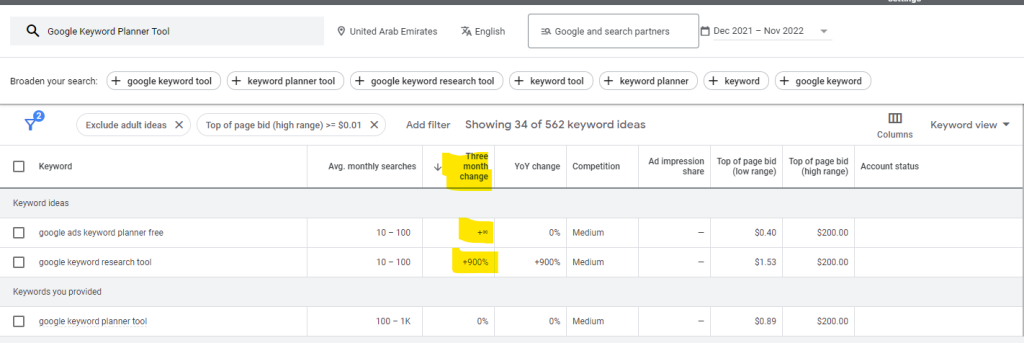
Image Source: Google
The last “Three month change” in the Google Keyword Tool is an important metric to consider when conducting keyword research and planning your SEO strategy. It helps users understand the current demand for a particular keyword and identify trends. It can also help users gauge the competitiveness of a keyword, as an increase in search volume may indicate more competition.
Using the last “Three month change”, users can make informed decisions about which keywords to target in their SEO and PPC campaigns. For example, if a keyword has a high search volume and is showing a steady increase over the past three months, it may be worth targeting as it indicates a current demand and potential for success. On the other hand, if a keyword has a decreasing search volume, it may not be as valuable to target campaigns. By considering the last “three month change”, users can optimize their keyword strategy for the best possible results.
#4 Filtering and Refining Keywords
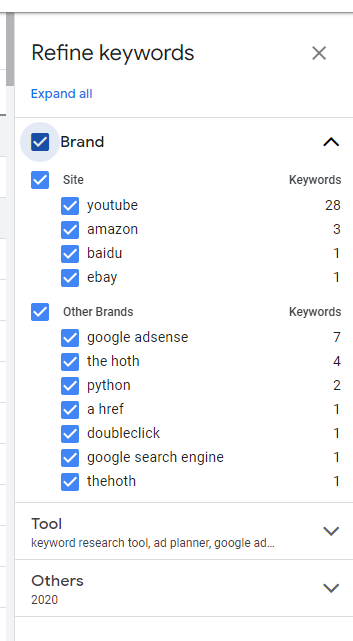
Image Source: Google
Another useful feature of the Google Keyword Planner tool is the “Refine Keywords” option, located on the far right side of the page. This allows you to further filter your keywords by various criteria, such as branded or non-branded terms, location, language, and more. This can be especially helpful if you want to target a specific audience or optimize your keywords for a particular location or language.
Read more: Maximize Your Christmas SEO with These Seasonal Keyword Tips
#5 Tracking Keyword Performance on the Google Keyword Planner tool
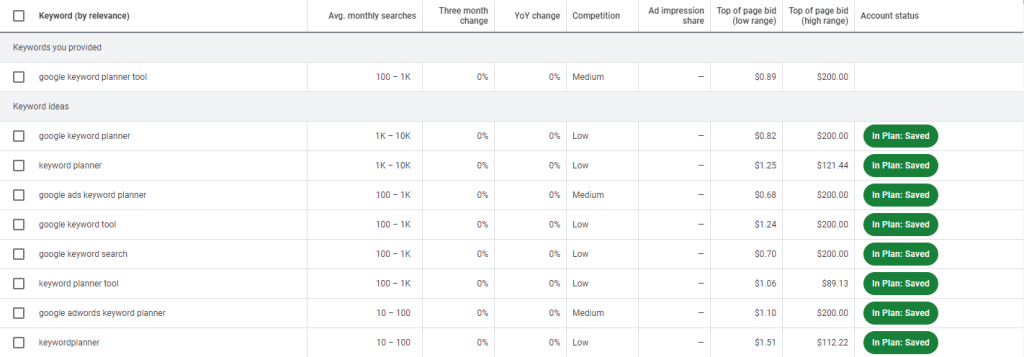
Image Source: Google
Once you’ve found some keywords that you like, you can add them to your “Plan” by clicking on the plus sign next to each keyword. This will allow you to track the performance of these keywords over time and see how they compare to your competitors.
#6 Using the “Get Search Volume and Forecasts” Feature
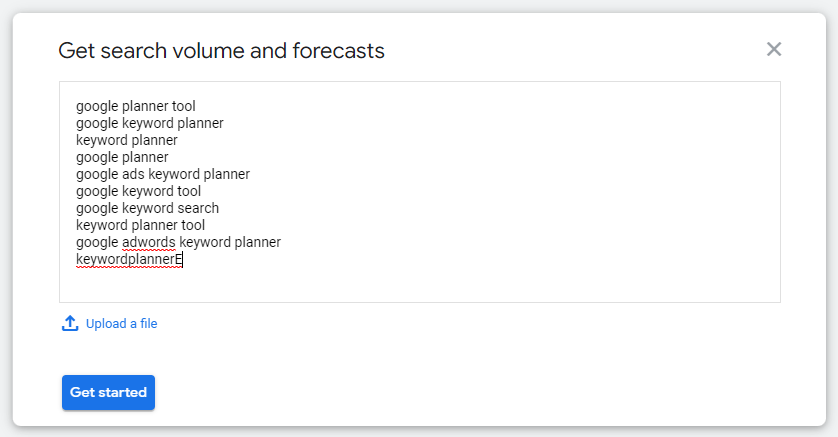
Image Source: Google
Another option is the “Get search volume and forecasts” feature, which allows you to enter specific keywords and see their average monthly search volume, as well as their potential ad performance. This information can be helpful when deciding which keywords to target in your SEO or pay-per-click (PPC) campaigns. By understanding the search volume of a keyword, you can get a sense of the level of demand for that keyword and how competitive it is.
The potential ad performance estimates, on the other hand, can give you an idea of the expected cost-per-click (CPC) and click-through rate (CTR) for a keyword, which can help you determine the potential return on investment (ROI) of targeting that keyword in your PPC campaigns. Additionally, the forecast feature allows you to see estimates for the number of clicks, impressions, and cost that you might expect to receive if you were to bid on a particular keyword. This can be useful when planning and budgeting for your PPC campaigns.

#7 The Importance of the Google Keyword Planner in Your SEO & PPC Strategy
Overall, the Google Keyword Planner tool is a valuable resource for anyone looking to improve their search engine rankings. Whether you’re a small business owner or a digital marketer, this tool can help you find the best keywords for your website and maximize your online visibility.












